Táragas
Úr Wikipediu, frjálsa alfræðiritinu
Riot control agent
From Wikipedia, the free encyclopedia
| This article needs additional citations for verification. Please help improve this article by adding reliable references. Unsourced material may be challenged and removed. (January 2008) |
| This article's factual accuracy is disputed. Please see the relevant discussion on the talk page. (March 2008) |



Riot control agents are less-lethal lachrymatory agents used for riot control. Most commonly used riot control agents are pepper spray and various kinds of tear gas.
These chemicals disperse a crowd that could be protesting, in a riot, or to clear a building. They can rapidly produce sensory irritation or disabling physical effects which usually disappear within 15 minutes (for tear gas) and up to 2 hours (for pepper spray) following termination of exposure. They can also be used for chemical warfare defense training, although their use in warfare itself is a violation of Article I.5 of the Chemical Weapons Convention. Article II.9 of the CWC specifically authorizes their use for civilian law enforcement [1].
Contents[hide] |
[edit] Substances
Two lachrymatory agents most commonly used for riot control are pepper spray and various kinds of tear gas.
[edit] Pepper spray
- Main article: Pepper spray
The active ingredient in pepper spray is capsaicin, which is a chemical derived from the fruit of plants in the Capsicum genus, including chiles. A synthetic analogue of capsaicin, pelargonic acid vanillylamide (desmethyldihydrocapsaicin), is used in another version of pepper spray known as PAVA spray which is used in England. Another synthetic counterpart of pepper spray, pelargonic acid morpholide, was developed and is widely used in Russia. Its effectiveness compared to natural pepper spray is unclear and it has caused some injuries.
Pepper spray typically comes in canisters, which are often small enough to be carried or concealed in a pocket or purse. Pepper spray can also be bought concealed in items such as rings. There are also pepper spray projectiles available, which can be fired from a paintball gun. Having been used for years against demonstrators [2], it is increasingly being used by police in routine interventions.[3]
[edit] Tear gas
- Main article: Lachrymatory agent
Tear gas is a non-specific term for any chemical that is used to cause temporary incapacitation through irritation of eyes and/or respiratory system. It is used as a hand-held spray or can be fired in canisters that heat up spewing out a 'gas' cloud at a steady rate. Technically, these clouds are aerosols, and not true gases.[4] [1][5]
Popular tear gases include the eye irritants ortho-chlorobenzylidene-malononitrile (CS gas), chloroacetophenone (CN gas), and dibenz (b,f)-1,4-oxazepine (CR gas). Among a long list of substances, these three have become of greater importance than the others because of their effectiveness and low risks when used. Today, CS has largely replaced CN as the most widely used tear gas internationally.[citation needed]
[edit] Decontamination
At room temperature, these tear gases are white solid substances. They are stable when heated and have low vapor pressure. Consequently, they are generally dispersed as aerosols. All of them have low solubility in water but can be dissolved in several organic solvents. Hydrolysis of CN is very slow in water solution, also when alkali is added. CS is rapidly hydrolyzed in water solution (half-life at pH 7 is about 15 min. at room temperature) and extremely rapid when alkali is added (half-life at pH 9 is about 1 min.). CR is hydrolyzed only to a negligible extent in water solution.
CN and CR are, thus, difficult to decompose under practical conditions, whereas CS can easily be inactivated by means of a water solution. Skin is suitably decontaminated by thorough washing with soap and water. CS is then decomposed whereas CN and CR are only removed.
Decontamination of material after contamination with CS can be done with a 5-10 % soda solution or 2 % alkaline solution. If this type of decontamination cannot be accomplished (e.g., contaminated rooms and furniture), then the only other means is by intensive air exchange—preferably with hot air.
Exposed streets and sidewalks will have toxic[citation needed] and irritating CS powder that will be stirred into the air by traffic and pedestrians long after the cloud has dissipated, and should be washed away with water.
In contrast to human beings, domesticated animals generally have low sensitivity to tear gases. Dogs and horses can therefore be used by police for riot control even when tear gas is used.[citation needed]
[edit] Dispensing large quantities
Backpack dispensers for riot control agents, when the intent is to use a larger quantity than possible with grenades, are one type of device used by organizations that might, for example, need to cover a prison yard [6] Dispensers are also made for attachment to helicopters; see CBU-19 [7].
[edit] See also
- Pepper spray
- CS gas
- CN gas
- Use of poison gas in World War I
- Review about Pharmacology, Toxicology, Biochemistry and Chemistry of several riot control agents:
Olajos EJ, Salem H (2001). "Riot Control Agents: Pharmacology, Toxicology, Biochemistry and Chemistry". J Appl Toxicol 21 (5): 355–91. doi:10.1002/jat.767. PMID 11746179.
[edit] External links
[edit] References
- ^ 9. "Purposes Not Prohibited Under this Convention" means[dead link]]
- ^ Use on infants
- ^ Use on infants
- ^ "BBC - h2g2 - CS Gas". Bbc.co.uk. http://www.bbc.co.uk/dna/h2g2/A655517. Retrieved on 2008-12-26.
- ^ http://www.google.co.uk/search?sourceid=navclient&aq=t&ie=UTF-8&rlz=1T4GGLJ_enGB226GB226&q=cs+gas+effects
- ^ Commercial Backpack Blower / Sprayer System,US Army CBDCOM,June 1998.
- ^ Operation TAILWIND Review Extract of U.S Air Force Report,Air Force Historical Office, July 1998

|
Spyrja um efni í lögreglugasi |
| Tilkynna um óviðeigandi tengingu við frétt | |
Flokkur: Dægurmál | Þriðjudagur, 6. janúar 2009 (breytt kl. 19:08) | Facebook
« Síðasta færsla | Næsta færsla »
DJ Stórhöfði
Höfundur er

og er rauðhærður einhleypur Eyjapeyji í húð og hári sem segir hvernig veðri er á syðsta bygðabóli Íslands. Eða þangað til ég var "rekinn" þaðan eftir 23 ára starf fyrir Veðurstofu Íslands og Siglingastofnun
123.is: http://dj_storhofdi.123.is/
Netfang: palmifreyroskarsson@gmail.com
Heimsóknir
Flettingar
- Í dag (2.7.): 1
- Sl. sólarhring: 1
- Sl. viku: 20
- Frá upphafi: 239705
Annað
- Innlit í dag: 1
- Innlit sl. viku: 10
- Gestir í dag: 1
- IP-tölur í dag: 1
Uppfært á 3 mín. fresti.
Skýringar
Nýjustu færslur
- 8.3.2019 2 ----- Vindhraði í Vestm. mars 2019:
- 1.3.2019 4 ---- Úrkoma í Vestmannaeyjum mars 2019:
- 3.2.2019 1 ---- Hiti í Vestmannaeyjum febrúar 2019:
- 3.2.2019 2 ---- Vindhraði í Vestm. feb. 2019:
- 3.2.2019 4
- 3.12.2018 1 -- Hiti í Vestmannaeyjum desember 2018:
- 3.12.2018 2 -- Vindhraði í Vestmannaeyjum desember 2018:
- 3.10.2018 2- Vindhraði í Vestm. október 2018:
- 4.9.2018 1
- 28.8.2018 4
- 27.8.2018 2
- 15.4.2018 1 - apríl
- 15.4.2018 2) Vindhraði í Vestmannaejum í apríl 2018:
- 6.3.2018 2) Vindhraði í Vestmannaejum í mars 2018:
- 7.2.2018 2) Vindhraði í Vestmannaejum í febrúar 2018:
Eldri færslur
2019
2018
2017
2016
2015
2014
2013
2012
2011
2010
2009
2008
2007
2006
Tenglar
Ég á netinu.....
égánetinu
Eyjavefir
Eyjavefir
- Eyjar.net Eyjafréttamiðill
- Eyjaféttir.is Eyjafréttamiðill
- ÍBV Íþróttafélag Vestmannaeyjar
- Körfuknattsfélag ÍBV Körfuknattsfélag ÍBV
- Vestmannaeyjabær Vestmannaeyjabær
Eyjablogg á Blog.is (virkt):
- Georg Goggi
- Helgi Þór Gunnarsson Helgi Þór
- Sigmar Þór Sveinbjörnsson Sigmar
- Sigursveinn Þórðarsson Sigursveinn
- Snorri í Betel" Óskarsson Snorri í Betel
- Þorkell Sigurjónsson Þorkell Hector
Eyjablogg á 123.is
Eyjablogg á 123.is
- Álsey VE 2 Áhöfn á skipi
- Lyngfell Ungt hestafólk
- Sighvatur Bjarnason Ve xxx
- Þorgeir xxx
Eyjablogg á blog.is
Eyjablogg
- Andri Ólafsson andri
- Elliði Vignisson Elli Bæjó
- Eygló Harðar Eygló framsóknarmaður
- Séra Guðmundur Orri Eyjaprestur
- Gísli Hjartarson Fosterinn
- Hildur Sólvei Hildur
- Hanna Birna Hanna Birna í Suðurgarði
- Högni Hilmarsson
- Kjartan Vídó Kjartan
- Séra Kristján Björnsson Séra Kristján
- Magnús Bragason Maggi Braga
- Matthilda Tórshamar Tilda Tórs
- Smári Jökull Smári klaki
- Sigþóra Guðmundd. Sigþóra skólasystir
- Sveinn Waage Sveinn "fydnasti maður íslands"
- Vinir Ketils Bónda Bræðarfélag
Íslenskar veðursíður/blogg
- Einar Veðurfræðingur Veðurblogg
- Haraldur Eldfjallafræðingur
Íslenskir tónlistarvefir
- Breakbeat.is Drum and Bass-tónlist
Íslenskt djamm
- Superman.is Djammmyndir
- Pose.is
Moggabloggið
- Hallur Magnússon Hallur Magnússon Fjögurra barna faðir
- Jón Gerald Sullenberger
Moggablogg-Stjórnmálamenn
- Bjarni Harðarsson (Framsókn) Framsókn
- Björn Bjarnason
- Dögg Pálsdóttir lögmaður og rekur lögmanns-
- Gunnar Sigurðsson VG í Reykjavík
- Helga Sigrún Harðardóttir er 3. þingmaður Suðurkjördæmis en býður sig fram til að leiða lista framsóknarmanna í SV kjördæmi fyrir alþingiskosningarnar í apríl


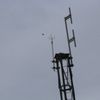
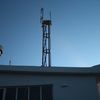







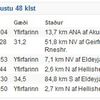
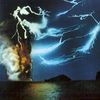
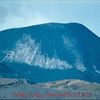
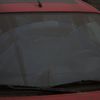
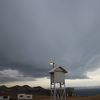



Athugasemdir
Afhverju eru thessir motmaelendur ekki bara med sundgleraugu.. til ad varna gasinu ingongu i augntoturnar. tha getur lodrellann bara sprayad ad vild.
Haukur (IP-tala skráð) 6.1.2009 kl. 18:22
En þarna ertu bara með aðra týpuna... Svo er líka til OC útgáfan sem er unnið úr pipar og flokkast sem náttúrlegt taugaeitur(sama virka efni og þú finnur í chilli og öðrum sterkum mat).
Tommi (IP-tala skráð) 6.1.2009 kl. 18:28
Ég held að það sé ekki vitlaus hugmynd hjá þér Haukur .
.
Tommi: Ég fór bara á wikipedia á íslensku, sem ég setti á síðuna. Enn þar sem þú bentir á að einhvað vantar í þetta hjá mér og íslenska wikipediu. Þá fór ég á ensku wikipediu, og fann þar mun meira um "taragasið", og setti það inn á færsuna.
Pálmi Freyr Óskarsson, 6.1.2009 kl. 19:15
Bæta við athugasemd [Innskráning]
Ekki er lengur hægt að skrifa athugasemdir við færsluna, þar sem tímamörk á athugasemdir eru liðin.